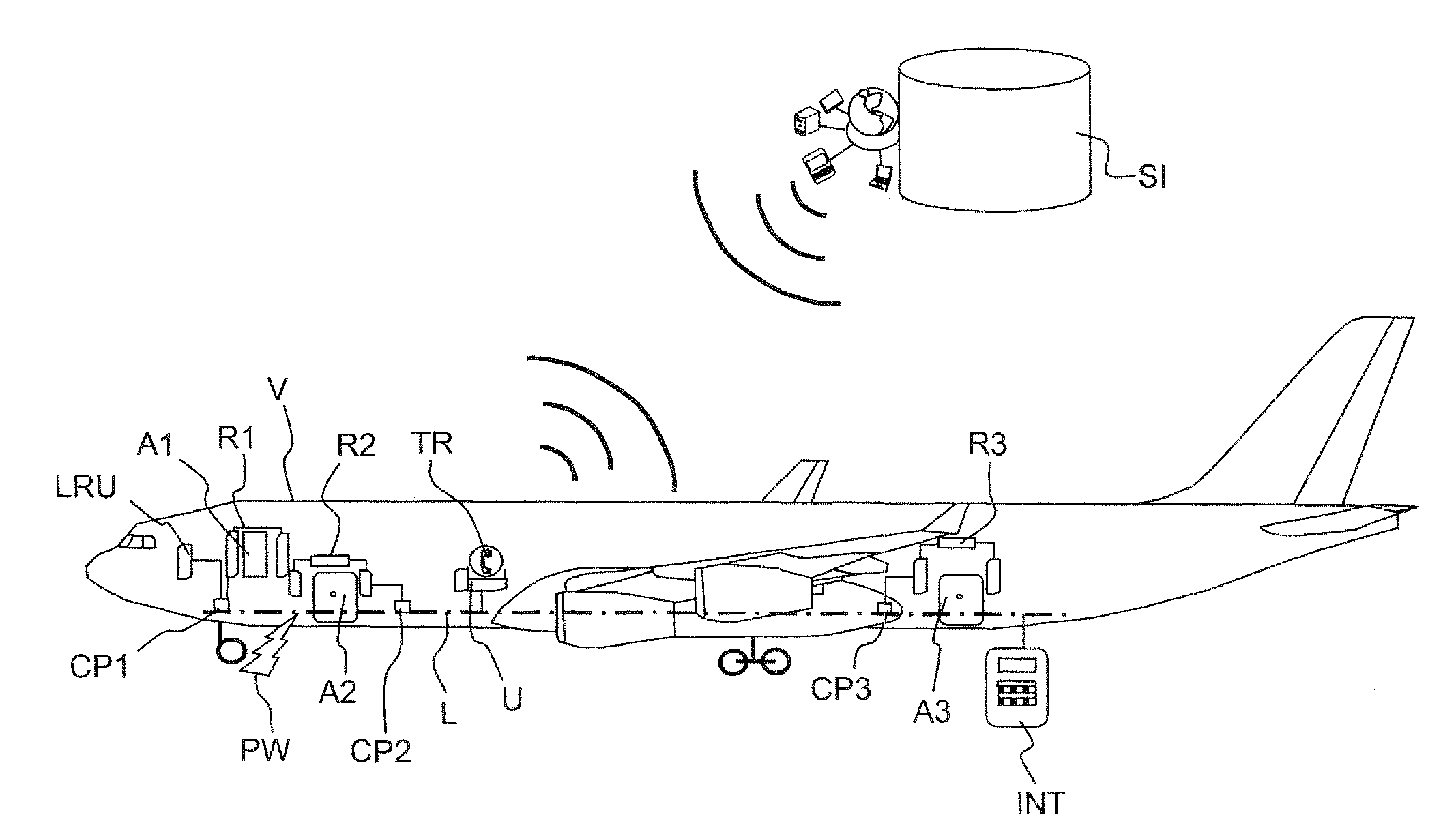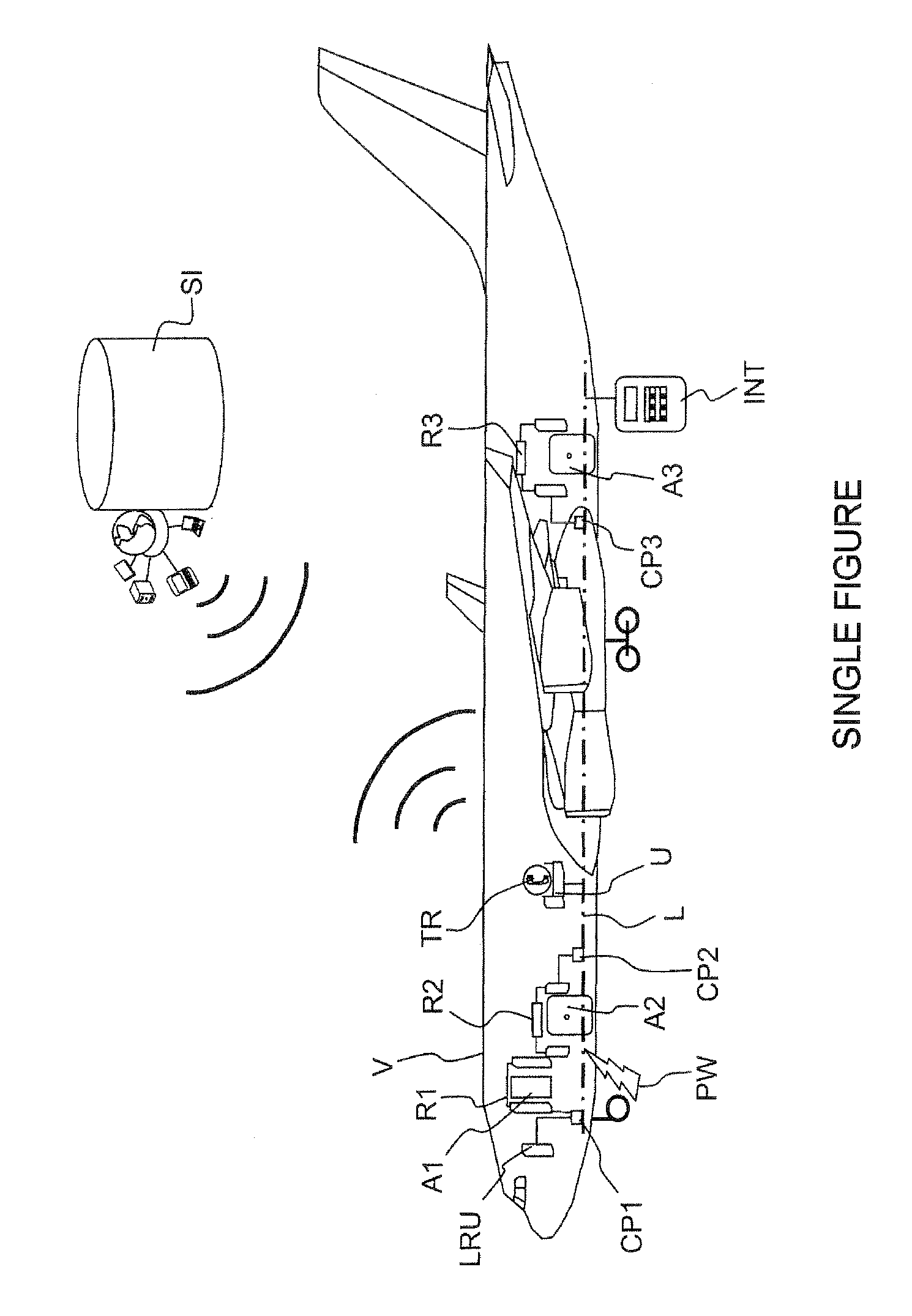Onboard System for Identifying and Monitoring the Content of an Aircraft
a technology for aircraft and content, applied in the field of air transport means, can solve the problems of high cost, incomplete loss, and complexity of demonstrating non-disturbance to flight-critical systems, and achieve the effect of reducing the major drawback
- Summary
- Abstract
- Description
- Claims
- Application Information
AI Technical Summary
Benefits of technology
Problems solved by technology
Method used
Image
Examples
Embodiment Construction
[0069]The single FIGURE presents a diagram of the system according to the invention, represented, for illustrative purposes, within the framework of an installation on an aircraft V. This FIGURE represents a preferential embodiment, in which the pre-existing power supply network, designed and certified so as to be able to be powered up only when the aircraft is on the ground, and utilized by the device according to the invention is that of a device present in the hold of the aeroplane, such as the device for conveying containers.
[0070]The onboard system for identifying and monitoring the content of a transport aircraft according to the invention is therefore installed on an aircraft V. This aircraft V comprises three accessways A1, A2, A3, dedicated respectively to the entry / exit of passengers, to the entry / exit of luggage, and to the entry / exit of ancillary containers. Each accessway is equipped with means of remote reading of AID type (the acronym standing for Automated Identifica...
PUM
 Login to View More
Login to View More Abstract
Description
Claims
Application Information
 Login to View More
Login to View More - R&D
- Intellectual Property
- Life Sciences
- Materials
- Tech Scout
- Unparalleled Data Quality
- Higher Quality Content
- 60% Fewer Hallucinations
Browse by: Latest US Patents, China's latest patents, Technical Efficacy Thesaurus, Application Domain, Technology Topic, Popular Technical Reports.
© 2025 PatSnap. All rights reserved.Legal|Privacy policy|Modern Slavery Act Transparency Statement|Sitemap|About US| Contact US: help@patsnap.com


